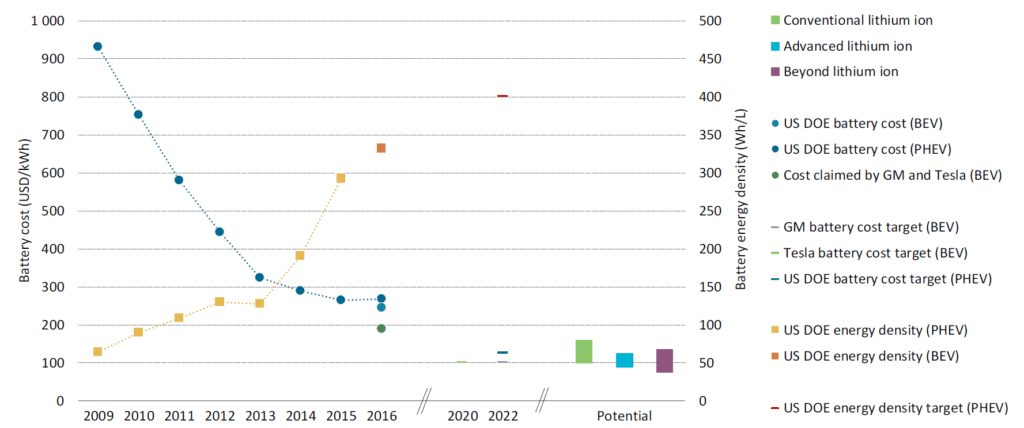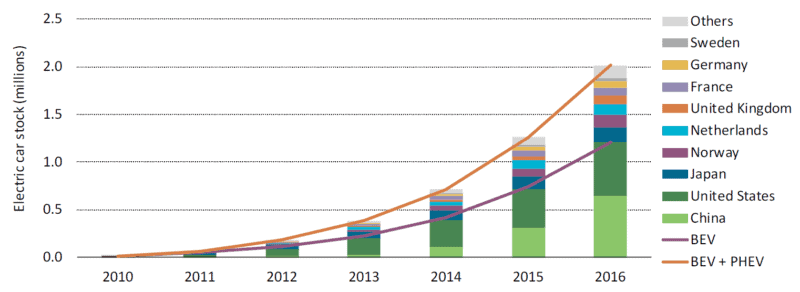When- and wherever it occurs, exponential growth is transformative. After a long period of stagnation or slow increase, some important quantity begins doubling and redoubling. The exponential growth in cloth, coal, and iron production transformed the world during the Industrial Revolution. The exponential growth in the power and production volumes of transistors (see previous blog post)—a phenomenon codified as “Moore’s Law”—made possible the information revolution, the internet, and smartphones. Electric cars and their battery systems have now entered a phase of exponential growth.
There are two categories of electric vehicles (EVs). The first is plug-in hybrid electric vehicles (PHEVs). These cars have batteries and can be driven a limited distance (usually tens of kilometres) using electrical power only, after which a conventional piston engine engages to charge the batteries or assist in propulsion. Well-known PHEVs include the Chevrolet Volt and the Toyota Prius Plug-in.
The second category is the battery electric vehicle (BEV). Compared to PHEVs, BEVs have larger batteries, longer all-electric range (150 to 400 kms), and no internal combustion engines. Well-known BEVs include the Nissan Leaf, Chevrolet Bolt, and several models from Tesla. The term electric vehicle (EV) encompasses both PHEVs and BEVs.
The graph above is reproduced from a very recent report from the International Energy Agency (IEA) entitled Global EV Outlook 2017. It shows that the total number of electric vehicles in the world is increasing exponentially—doubling and redoubling every year or two. In 2012, there we nearly a quarter-million EVs on streets and roads worldwide. A year or two later, there were half-a-million. By 2015 the number had surpassed one million. And it is now well over two million. Annual production of EVs is similarly increasing exponentially. This kind of exponential growth promises to transform the global vehicle fleet.
But if it was just vehicle numbers and production volumes that were increasing exponentially this trend would not be very interesting or, in the end, very powerful. More important, quantitative measures of EV technology and capacity are doubling and redoubling. This second graph, below, taken from the same IEA report, shows the dramatic decrease in the cost of a unit of battery storage (the downward trending line) and the dramatic increase in the energy storage density of EV batteries (upward trending line). If we compare 2016 to 2009, we find that today an EV battery of a given capacity costs one-third as much and is potentially one-quarter the size. Stated another way, for about the same money, and packaged into about the same space, a current battery can drive an electric car three or four times as far.

Looking to the future, GM, Tesla, and the US Department of Energy all project that battery costs will decrease by half in the coming five years. Though these energy density increases and cost decreases will undoubtedly plateau in coming decades, improvements underway now are rapidly moving EVs from the periphery to the mainstream. EVs may soon eclipse internal-combustion-engine cars in all measures: emissions, purchase affordability, operating costs, performance, comfort, and even sales.
Source for graphs: International Energy Agency, Global EV Outlook 2017: Two Million and Counting

